There’s a lot of hypothesis but in the end, only Ron Gilbert knows… Or does he? In his blog, he jokingly said he forgot about it, so it’s up to us to speculate!
Perhaps the secret was a plot device all along, just like the suitcase in Pulp Fiction. Maybe it’s something we had under our noses all the time… Maybe it’s the fourth-wall-breaking joke towards the ending of the first game.
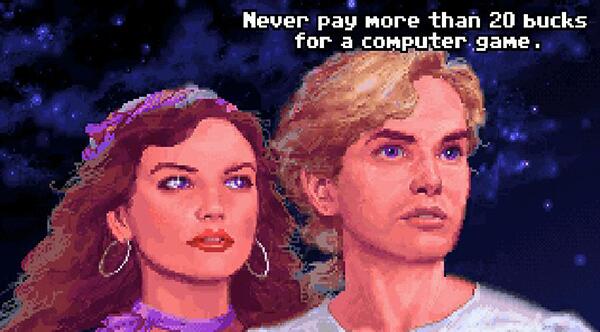
That’s all for todays analysis, see you next time.
No but seriously, let’s commemorate 30 whopping years of the franchise with a combo: two reviews in one! Of course, we’ll start with the first title, the game which almost single-handedly popularized the graphic adventure genre…
The Secret of Monkey Island.
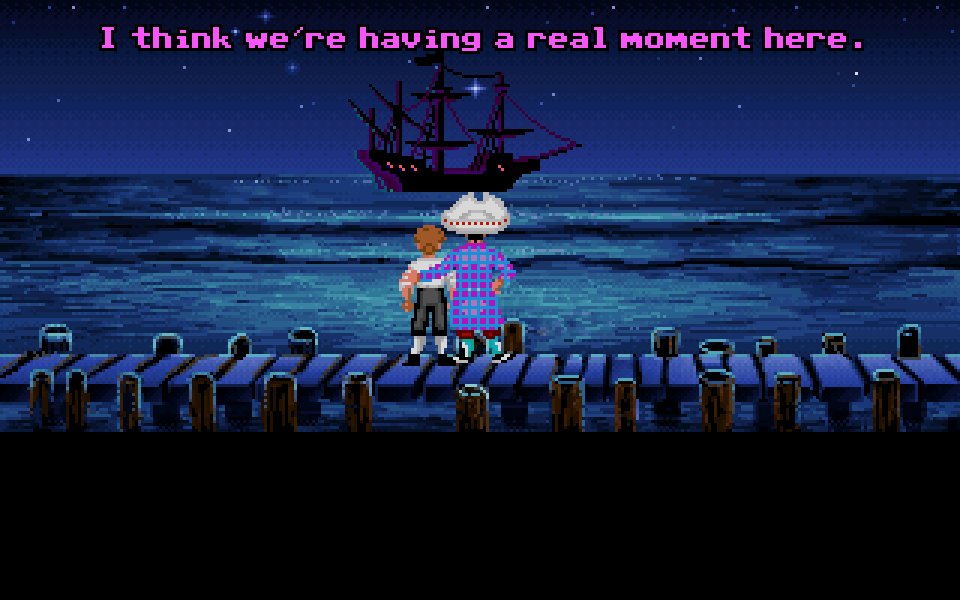
The Origins
After text adventures like Zork were a thing of the past, the so called graphic adventures started to pop out like a natural evolution of the former. These were pretty rudimental at first, until King’s Quest came along.
And so, Sierra (publishers and developers of the game) struck gold, with lots of users around the world enamored with such a novelty. However, beneath those gaudy animated pixels, the roots in text adventures were still apparent: you had to type in order to perform the majority of actions, and the instant death scenarios were maliciously scattered throughout the game — still brutal and all-encompassing.
This until LucasFilm started competing against Sierra on this sector… The rest is history; the Script Creation Utility for Maniac Mansion, often abbreviated as “SCUMM” was born, a game engine which became a staple in LucasFilm’s graphic adventures.
Plenty of great franchises and single titles spawned thanks to it, most notably: Maniac Mansion, Day of the Tentacle, The Dig, Indiana Jones, Full Throttle, Sam & Max, Loom, and of course…
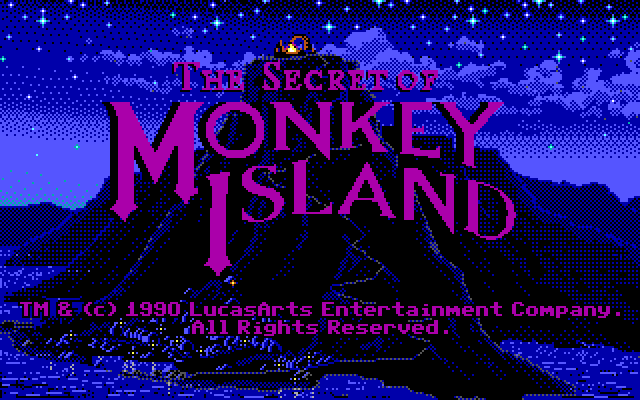
The Ingenuity
Born by the fervent minds of Ron Gilbert, Dave Grossman and Tim Schafer, this game was pretty ambitious for the time, not just regarding the technical aspects, but also gameplay and the premise itself: you aren’t a knight in a fantasy world, nor you’re an astronaut in a sci-fi setting. You’re just a young boy who aspires to be a pirate in the Caribbean.
Sounds original and almost epic, right? Well, that’s because it is! But it’s not just that. This series, especially the first two chapters, are widely known because of the desecrating humor: the comedy plays a huge role in Monkey Island and it’s nothing short of ingenious.
Here’s a legendary example: you soon understand that a true pirate is not just skilled at swordsmanship or plundering, but also at insults. The greatest pirates are those who can hurt with the tongue just as much as they can with a scimitar.
And so Guybrush Threepwood (that’s the name of our sagacious protagonist) starts to learn insults all around Melee Island and when he finally meets the notorious Sword Master, he can finally prove how good he became at this art… Only to find out that her insults are way different compared to what he used down the streets! At this moment, the player starts to think “damn, I don’t have the right comebacks”, and right after, the eureka moment: her insults are sure different, but your counters fit just as good.
If a pirate said “You fight like a dairy farmer”, you reply with “How appropriate. You fight like a cow!” And if the Sword Master says “I will milk every drop of blood from your body!”… Well, you use the exact same comeback!
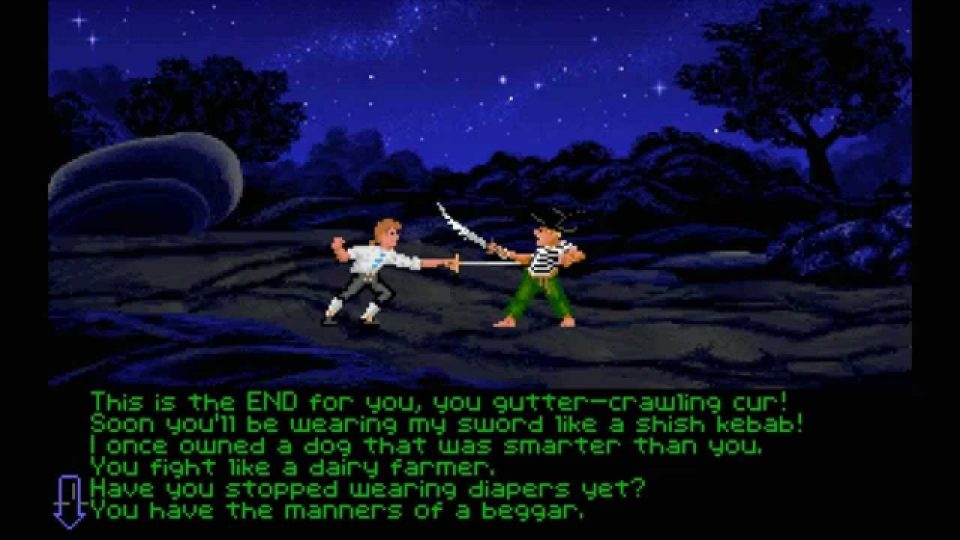
But this is only one of many examples. Frankly, these games are littered with jokes, references, cameos, hilarious puzzles and over-the-top characters. All of this is finely tied up by a fair gameplay where experimentation is awarded instead of punished.
If you’re reading this blog you probably already knew this… Or it could be that you’re a new player? Whatever the case, you should go back and replay those gems! For old times’ sake, and for assured laughter.

Let’s close the first block with an honorable mention: the graphics. Considered dated by todays standards, these actually marked a new standard and overall a new feat in digital graphics. Although the color palette was very limited, the artists still managed to give the illusion of more colors thanks to the art of dithering, proving that necessity is the mother of invention.
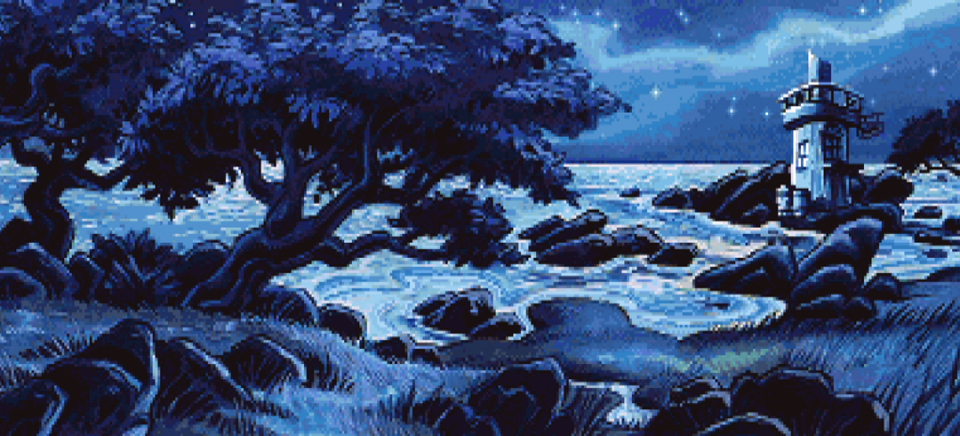
The Sequel
The second chapter in the series, Monkey Island 2: LeChuck’s Revenge, is also a revolutionary game. This time it wasn’t just the graphics: everything was overhauled.
The cast was more hilarious than ever, the puzzles required a bit more problem solving juice, the mesmerizing world was bigger, your quest demanded more exploration and, last but not least, the audio compartment was stellar.
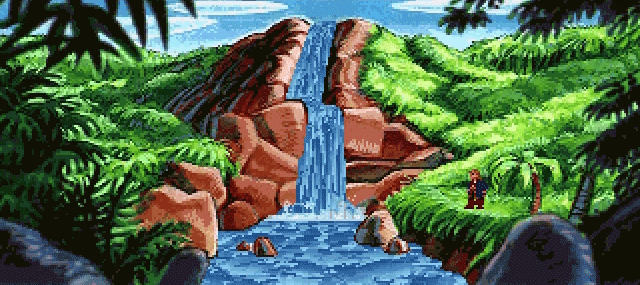
Not only the soundtrack fits the tone perfectly and is damn catchy, LucasArts also implemented a clever way to blend each track with one another: the underappreciated iMUSE made its debut here, an interactive music system which synchronizes visual cues with songs.
For example, if you’re exploring the cozy docks of Woodtick and then you enter into the carpenter’s hut, the music that’s being played will fade into something slightly different, and yet it will seem like a continuation of the same track thanks to iMUSE.


What else can be said about Monkey 2? It’s just a fine title all around, and it’s probably my favorite graphic adventure along with the first Broken Sword.
Did I enjoy the spitting contest on Booty Island? Did I laugh at the the return of one of the most hilarious characters in the videogame industry, Stan? Did I feel like a ninja when I sneaked in Largo LaGrande’s apartment in order to steal his toupee so I could make a voodoo doll out of him? Did I shout “wow” when I first saw the ending?
The answer is yes, for these and for plenty of other questions.
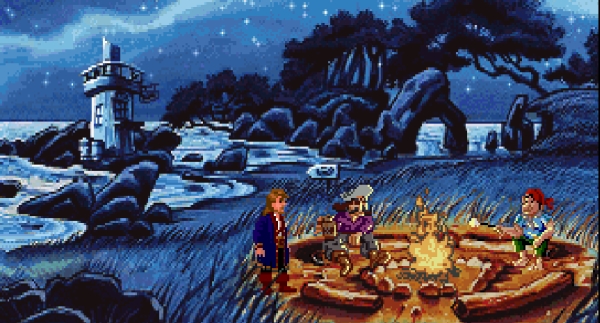
How Can You Play This Today?
In conclusion, if you want to play the best titles in the series — the ones I’ve talked about in this review — but you can’t stand the pixel art (if that’s so I won’t judge, but you’re objectively wrong), then I got you covered.
The Special Editions of both the historical titles are on Steam, and they’re great! Personally, I’m one of those who actually liked the new hand drawn style, but the thing I liked the most is that you can switch back to the original graphics in the blink of an eye, just by pressing a button… Each and everytime you want.
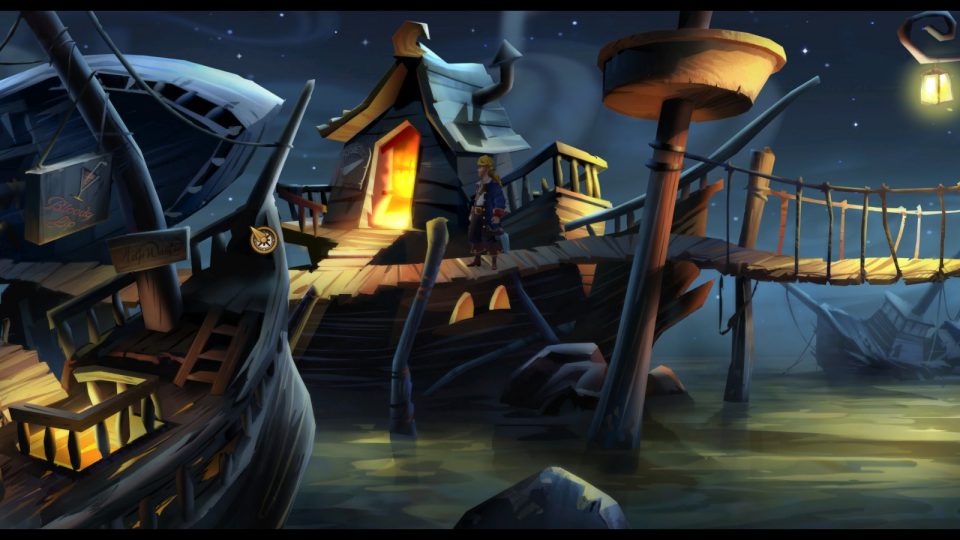
Another thing I loved in these editions is the voice acting. It’s sublime and every actor did his job very well; bonus points since you can play the legacy version without renouncing to said voice acting! (With the exception of the first game, where you need a mod for that).
Also noteworthy is that it features developers’ commentary in real time: when you enter certain zones, you can press a button in order to listen the original team discussing about a bunch of cool trivia related to whatever area you are.
Finally, the soundtrack is now performed live by a full orchestra and it’s pretty soothing. Here’s an example (best part starts at 3:07)
And this is finally it for todays review.
Let’s conclude with a simple “happy birthday, Monkey Island!”

